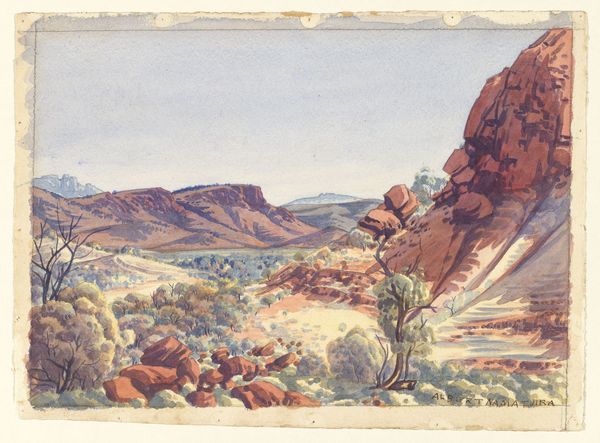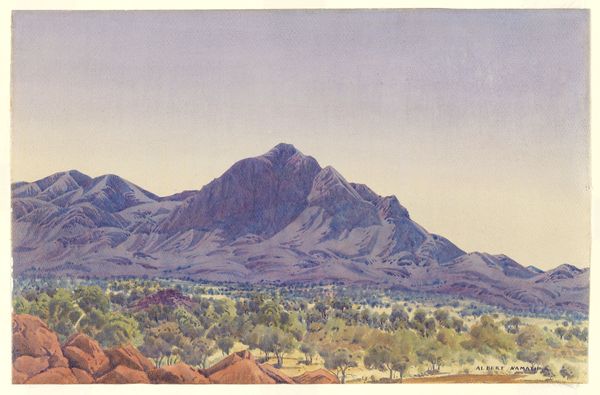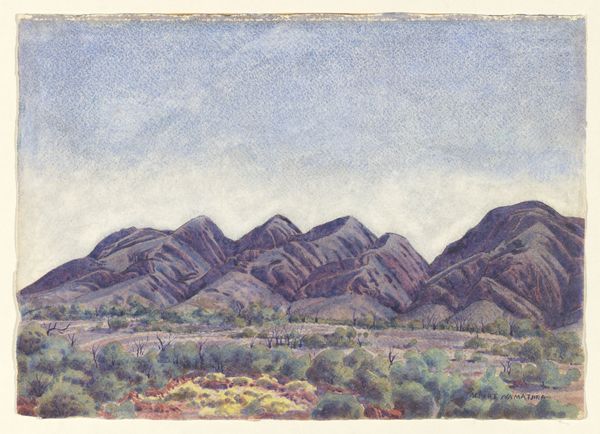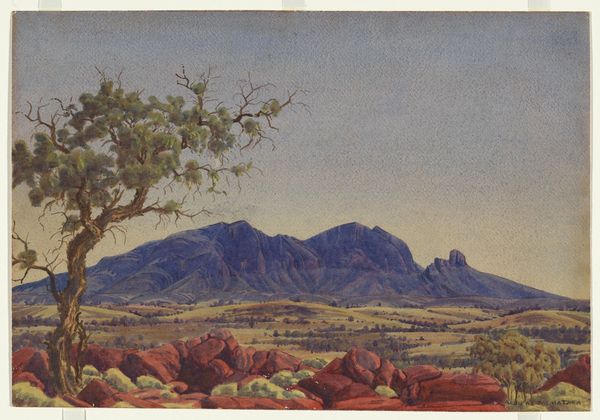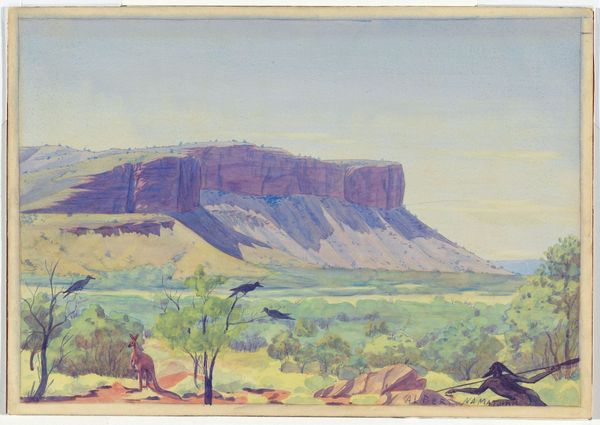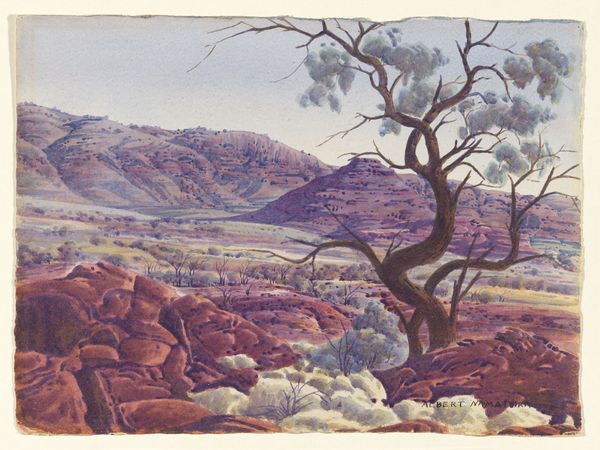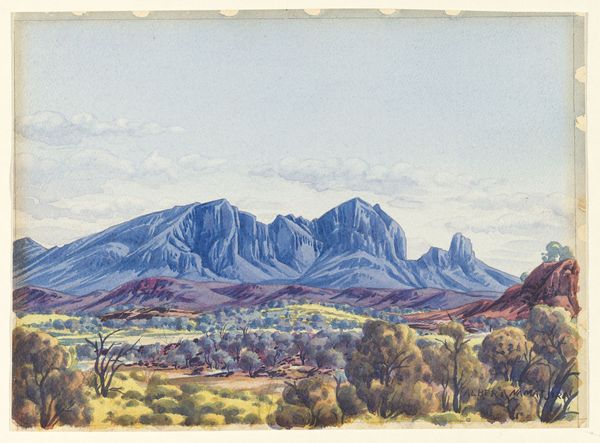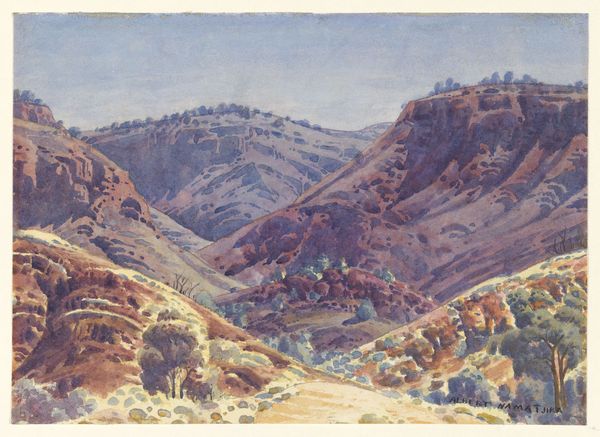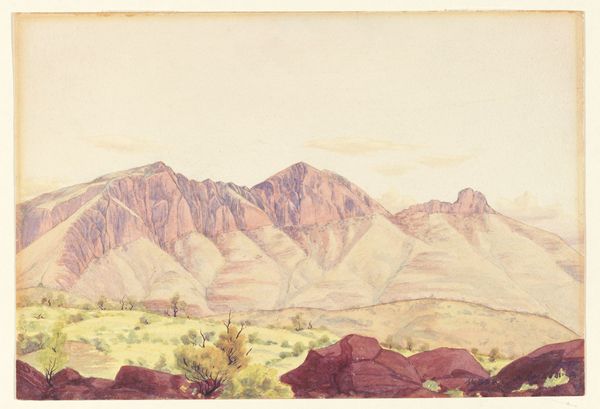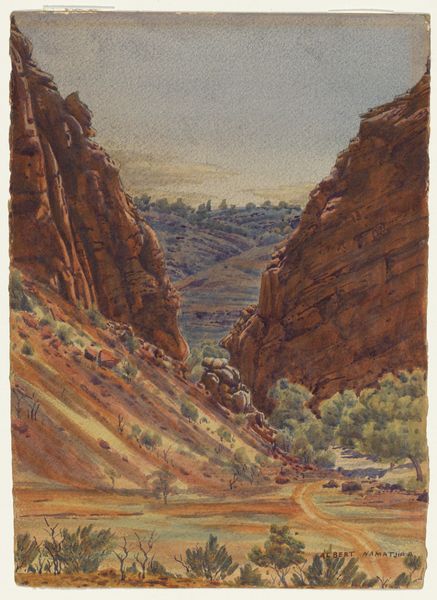
plein-air, watercolor
#
water colours
#
plein-air
#
landscape
#
oil painting
#
watercolor
#
coloured pencil
#
watercolor
Copyright: Albert Namatjira,Fair Use
Editor: This is "Monoliths, Palm Paddocks" painted in 1948 by Albert Namatjira, it's watercolor on paper, and what immediately strikes me is how this watercolor landscape has this feeling of timelessness but also feels so immediate. What do you see in this work? Curator: Namatjira’s landscapes are more than just pretty pictures. He painted in a Western style, yes, but his work needs to be situated within the context of colonial history and Indigenous representation. These are his ancestral lands, deeply imbued with cultural significance. Does knowing that change how you see his depiction of place, of home? Editor: Definitely. I see the vulnerability in expressing his connection to the land through a Western medium, which he learned from European artists. How did that position him within the Australian art scene? Curator: That’s the crucial point, isn't it? He gained enormous popularity, but this very adoption of Western techniques also brought criticism from those who wanted "authentic" Indigenous art – a very loaded term! His position was incredibly complex: celebrated, yet constantly negotiating cultural expectations and stereotypes. He used his art to both connect to his heritage and bridge cultures, a delicate balance. Do you see that tension in the work itself, now? Editor: Yes, especially in the simultaneous familiarity and otherness of the landscape. It's both accessible and profoundly personal, marked by his unique experience. Curator: Precisely. And by acknowledging the socio-political context of Namatjira’s work, we can look beyond just the aesthetic beauty of the painting and engage with important questions of cultural identity, representation, and the ongoing legacies of colonialism. Editor: Thanks for contextualizing this beautiful work, it definitely offers a broader perspective.
Comments
No comments
Be the first to comment and join the conversation on the ultimate creative platform.
